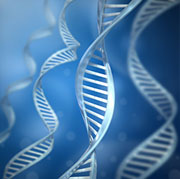- Understanding the Connection Between Anxiety and Depression
- How Daily Prunes Can Influence Cholesterol and Inflammation
- When to Take B12 for Better Absorption and Energy
- Epsom Salts: Health Benefits and Uses
- See What Saffron Can Do for Sleep and Heart Health
- 6 Common Mistakes to Avoid Before Your Physical
- Can Sweating Really Help You Beat a Cold?
- Strengthening Your Relationship: Practical Strategies
- Skip Storing This Everyday Product in the Fridge Door
- Green Tea + B3 Pairing May Boost Brain Health
Gene Therapy Shows Potential for ‘Bubble Boy’ Disease


A new form of gene therapy may offer a safe and effective way to treat “bubble boy” disease — a severe immune deficiency that is fatal unless treated in infancy.
Researchers have long known that gene therapy can cure the disease, known medically as severe combined immunodeficiency, or SCID. Over a decade ago, trials in Europe showed that gene therapy worked — but five of the 20 children treated developed leukemia (a type of cancer) within two to five years, according to background information in the study.
In the new trial, reported in the Oct. 9 New England Journal of Medicine, researchers refined the gene therapy approach to hopefully negate the leukemia risk.
Eight of nine children who received the therapy are still alive one to three years later, the investigators report. And so far, none has developed leukemia.
It’s too early to say the therapy carries no leukemia risk, cautioned researcher Dr. David Williams, a pediatric hematologist/oncologist at Dana-Farber Cancer Institute and Boston Children’s Hospital.
“We’ll continue to follow these children for 15 years,” Williams said.
But based on the early results, he noted, the tweaked gene therapy appears as effective at generating a functional immune system as the earlier form of treatment.
SCID refers to a group of rare genetic disorders that all but eliminate the immune system, according to the Immune Deficiency Foundation (IDF). That leaves children at high risk of severe infections.
In the United States, 40 to 100 babies are born with SCID each year, according to the National Institutes of Health. Early detection is becoming more common because a screening test recently became available. So far, 24 states and the District of Columbia have adopted the test, according to the IDF.
The term “bubble boy” became popular after a Texas boy with SCID lived in a plastic bubble to ward off infections. The boy, David Vetter, died in 1984 at the age of 12, after an unsuccessful bone marrow transplant — an attempt to give him a functioning immune system.
Today, children with SCID have a high chance of survival if they receive a transplant of blood stem cells — primitive cells that give rise to the immune system.
Ideally, those stem cells come from a sibling who is a perfect match for certain immune-system genes. If that’s not possible, a parent or genetically matched donor may be able to donate.
“But there are kids for whom no donor is available. Or for other reasons a transplant isn’t an option,” Williams said.
And, a study just published in July found that the timing of the transplant is key. For the best chances of a cure, it should be done early — ideally by the age of about 3.5 months — and before a child has suffered any infections.
In the new trial, eight of the nine boys had serious infections at the time of their treatment with gene therapy, and all but one survived. All of the boys had what’s known as X-linked SCID, a form of the disease that only causes disease symptoms in boys, according to IDF.
X-linked SCID is the most common form of SCID, according to the IDF. It’s caused by mutations in a gene called IL2G, according to the study. Gene therapy corrects the flaw by inserting a normal copy of the gene into a child’s own stem cells; those cells go on to produce normal immune-system cells. To get the gene into a child’s cells, researchers use a modified virus whose own genes have been largely removed.
But the virus used in the original SCID trials had an unfortunate side effect in some children: It activated certain cancer-promoting genes, according to background information in the study.
The virus developed for the new trial is “self-inactivating,” and designed to minimize the chances of activating cancer genes, according to the researchers.
Only time will tell if the therapy is free of leukemia risk.
“The early results are encouraging, but this needs more time to mature,” said Dr. Richard O’Reilly, chief of pediatric bone marrow transplant at Memorial Sloan-Kettering Cancer Center in New York City.
“This study is impressive,” said O’Reilly, who was not involved in the current research. “Many of the children had significant infections, and would be at high risk of [dying] with a stem cell transplant.”
The fact that survival was so high in babies with infections is “quite striking,” O’Reilly noted.
O’Reilly was one of the researchers on the recent stem cell transplant study. That study found that when babies were older than 3.5 months and had an active infection at the time of their transplant, half died, according to that study, which was published in the July 31 issue of the New England Journal of Medicine.
Gene therapy could offer an alternative to stem cell transplants for infants with infections, according to Williams. But whatever way the therapy ultimately fits in, it will not replace stem cell transplants, Williams added.
More information
The Immune Deficiency Foundation has more on transplants and gene therapy for SCID.
Source: HealthDay
Copyright © 2026 HealthDay. All rights reserved.










